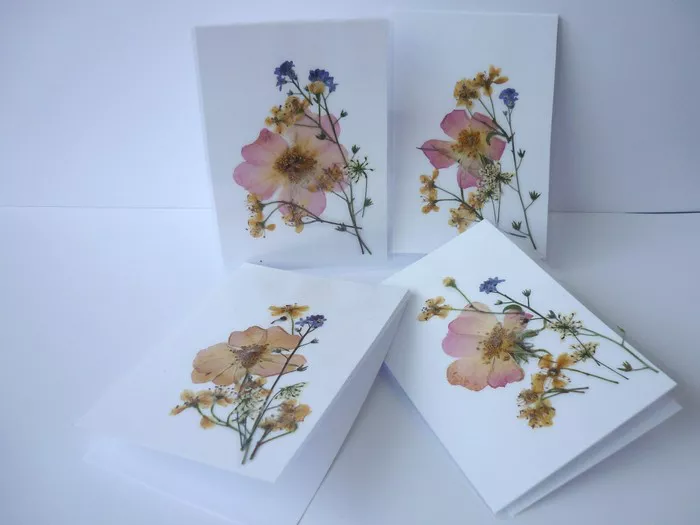Flower pressing is a timeless art form, allowing individuals to preserve the beauty of nature for years to come. Traditionally, flower pressing involves placing flowers between the pages of a heavy book or using a flower press to flatten and dry them. However, as enthusiasts seek more convenient and efficient methods, questions arise about alternative materials, such as parchment paper, for pressing flowers.
In this article, we delve into the feasibility and effectiveness of pressing flowers with parchment paper. We explore the advantages and limitations of this technique, providing insights and recommendations for those looking to embark on their own floral preservation journey.
Understanding Flower Pressing
Before delving into the specifics of using parchment paper for flower pressing, it’s essential to understand the process itself. Flower pressing is a simple yet delicate procedure that involves removing moisture from fresh flowers to preserve their shape and color.
The traditional method of flower pressing involves placing flowers between the pages of a heavy book or within a flower press. Over time, the weight and absorbency of the paper or cardboard sheets help to flatten the flowers while absorbing moisture, resulting in beautifully preserved blooms suitable for various crafts and projects.
The Role of Parchment Paper
Parchment paper, a durable and heat-resistant material commonly used in baking and cooking, has gained attention as a potential alternative for flower pressing. Its non-stick surface and ability to withstand moderate pressure make it an appealing option for those seeking a convenient and accessible method for preserving flowers.
Advantages of Using Parchment Paper
1. Non-Stick Surface: One of the primary advantages of parchment paper is its non-stick surface. Unlike traditional paper, parchment paper prevents flowers from adhering to its surface, minimizing the risk of damage when removing pressed blooms.
2. Heat Resistance: Parchment paper is heat-resistant, allowing it to withstand the moderate heat often applied during the pressing process. This feature ensures that the paper remains intact and does not release harmful chemicals or residues onto the flowers.
3. Accessibility: Parchment paper is readily available in most households and can be purchased at grocery stores, making it a convenient option for amateur flower enthusiasts and seasoned crafters alike.
4. Versatility: In addition to flower pressing, parchment paper can be used for various other crafting projects, such as paper quilling, baking, and wrapping, making it a versatile material to have on hand.
Limitations and Considerations
While parchment paper offers several advantages for flower pressing, it’s essential to consider its limitations and potential drawbacks.
1. Limited Absorbency: Unlike traditional flower pressing materials, such as blotting paper or cardboard, parchment paper has limited absorbency. As a result, it may take longer for flowers to dry thoroughly, potentially leading to discoloration or mold if not monitored carefully.
2. Thickness and Weight: Parchment paper is thinner and lighter than traditional flower pressing materials, which may affect the effectiveness of the pressing process. Flowers pressed between parchment paper may not flatten as evenly or thoroughly as those pressed between heavier materials.
3. Temperature Sensitivity: While parchment paper is heat-resistant, it is not immune to temperature fluctuations. Extreme heat or prolonged exposure to sunlight may cause the parchment paper to warp or degrade, compromising its effectiveness for flower pressing.
4. Size Limitations: The size of parchment paper sheets may limit the size of flowers that can be pressed effectively. Larger flowers may require multiple sheets or alternative pressing methods to ensure uniform flattening and preservation.
Best Practices for Pressing Flowers with Parchment Paper
To maximize the effectiveness of pressing flowers with parchment paper, consider the following best practices:
1. Choose Fresh Flowers: Select fresh flowers with vibrant colors and minimal blemishes for optimal results. Avoid using wilted or damaged flowers, as they may not press well and could detract from the overall appearance of the finished product.
2. Prepare Flowers Carefully: Trim excess foliage and stems from the flowers before pressing to reduce bulk and ensure even flattening. Arrange the flowers between sheets of parchment paper, leaving ample space between each bloom to prevent overcrowding.
3. Apply Even Pressure: Place the parchment paper with flowers between the pages of a heavy book or within a flower press. Apply even pressure by adding additional weight or tightening the press as needed. Check the flowers periodically to monitor progress and adjust pressure as necessary.
4. Monitor Drying Time: Allow the flowers to dry completely before removing them from the parchment paper. Depending on environmental conditions and the thickness of the flowers, this process may take several days to a week or longer. Avoid handling or disturbing the flowers during the drying process to prevent damage.
5. Store Pressed Flowers Properly: Once dried, carefully remove the pressed flowers from the parchment paper and store them in a cool, dry place away from direct sunlight. Place the flowers between sheets of acid-free paper or tissue to protect them from moisture and preserve their color and shape.
Conclusion
Pressing flowers with parchment paper offers a convenient and accessible method for preserving the beauty of nature. While parchment paper may not offer the same absorbency and weight as traditional flower pressing materials, it provides several advantages, including a non-stick surface, heat resistance, and versatility.
By understanding the limitations and best practices associated with pressing flowers with parchment paper, enthusiasts can achieve beautiful and long-lasting results. Whether embarking on a new crafting project or seeking to preserve cherished memories, parchment paper offers a simple yet effective solution for flower pressing enthusiasts of all levels.


